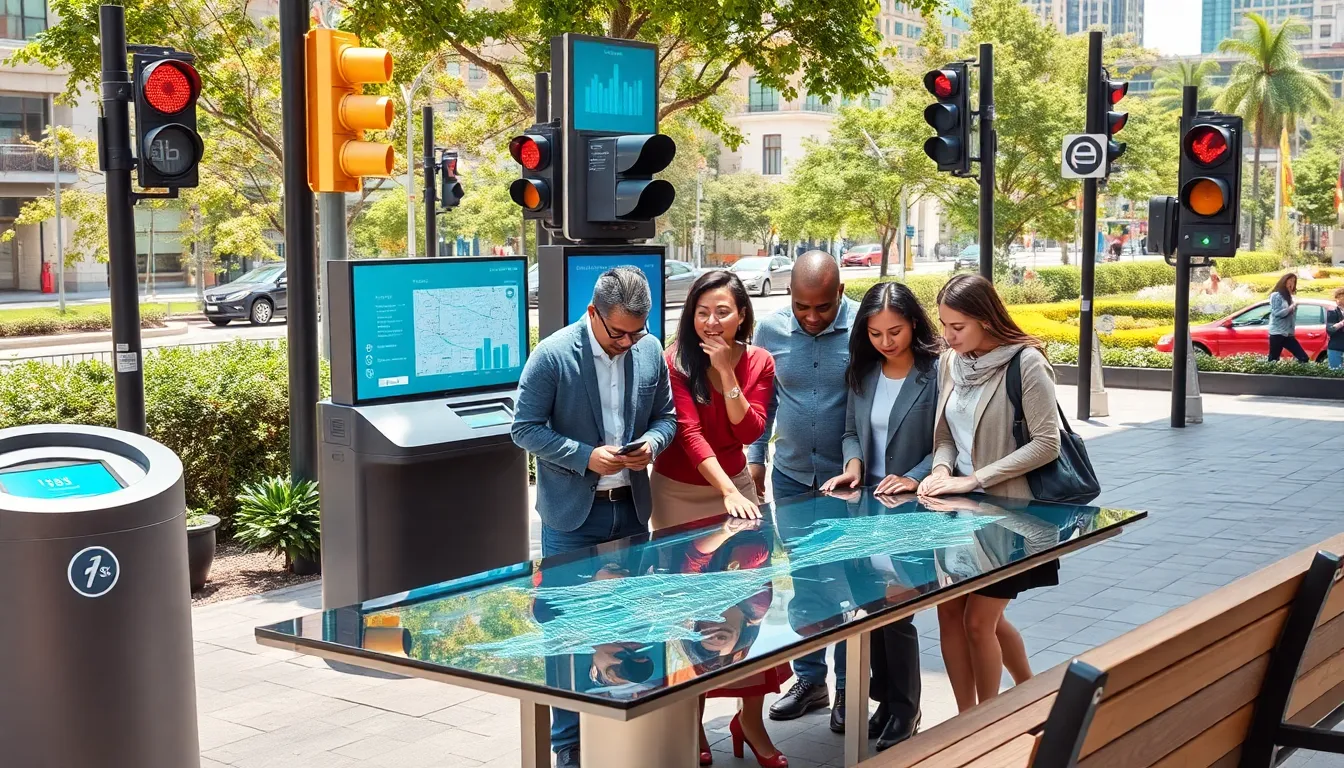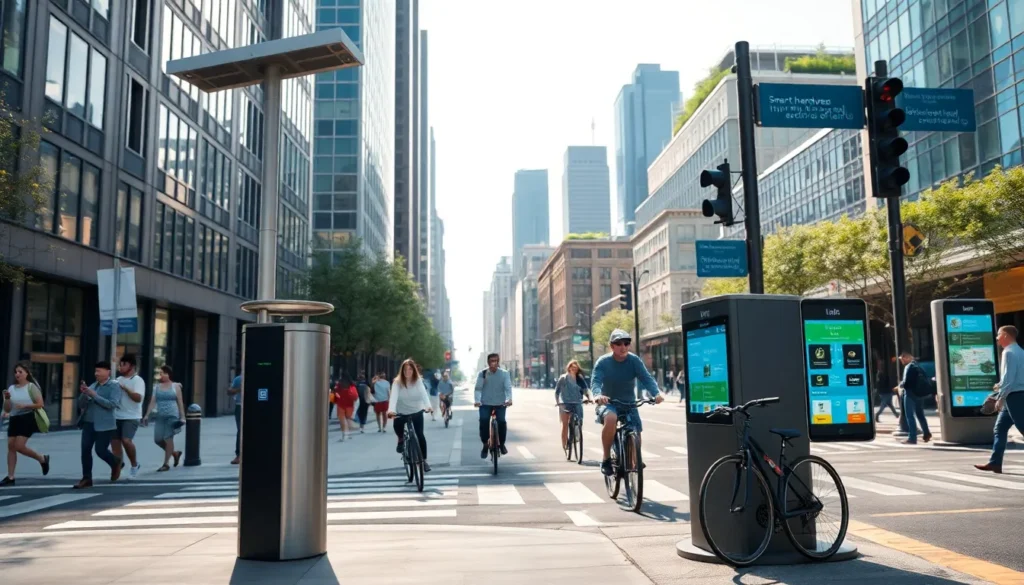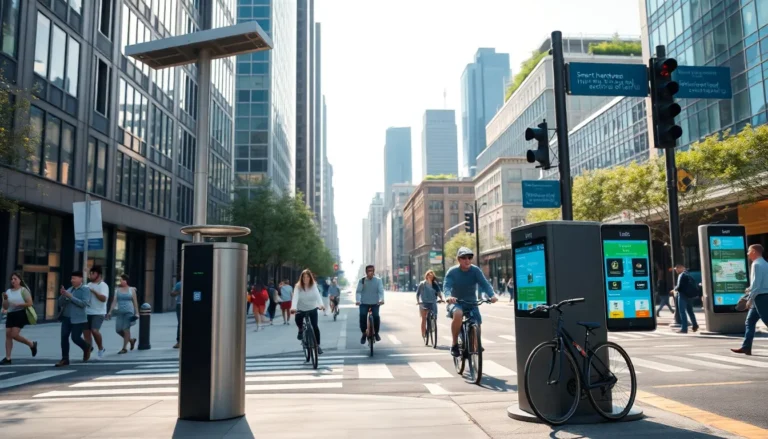Table of Contents
ToggleEver tried to navigate a bustling city with outdated infrastructure? It’s like trying to run a marathon in flip-flops. Urban hardware, the unsung hero of metropolitan evolution, is reshaping the very fabric of our daily lives. From smart trash bins to solar-powered streetlights, this realm of innovation promises a smoother, more sustainable existence. Buckle up as we jump into the world of urban hardware and discover how it’s poised to revolutionize city living, without breaking a sweat.
Understanding Urban Hardware

Urban hardware encompasses a variety of physical components designed to improve urban living. Think of it as the backbone of a smart city, where both form and function align to enhance the quality of life. It’s not just about tech for tech’s sake: these are tangible solutions to pressing urban issues. For instance, urban hardware includes everything from intelligent waste management systems that monitor trash levels to traffic signals that adapt based on real-time data inputs.
The goal is to create a seamless interaction between citizens and their environment. By integrating technology within city infrastructures, urban hardware aims to solve everyday problems and promote community well-being. Consultations with urban planners and tech innovators reveal that the focus of this sector is not merely on efficiency but also on enhancing accessibility and equity in public services.
The Role of Technology in Urban Environments
Technology serves as the lifeline for urban hardware, breathing new life into our cities. It plays a crucial role in transforming how citizens engage with public utilities, transportation, and even each other. For example, Internet of Things (IoT) devices are increasingly utilized to gather data that helps city administrators respond more effectively to community needs.
Imagine a city where streetlights adjust their brightness based on pedestrian activity. This kind of smart lighting doesn’t just save energy: it enhances safety. Beyond lighting, consider water management systems equipped with sensors to detect leaks or track consumption in real time. Such innovations help cities conserve resources while ensuring that citizens have access to essential services.
Besides, mobile apps are becoming essential components, allowing residents to report issues, pay for parking, or locate the nearest bike-sharing station, all from their smartphones. The fusion of technology and urban hardware not only streamlines operations but also fosters a sense of community among urban dwellers.
Examples of Urban Hardware Innovations
Countless urban hardware innovations serve as bright beacons of progress in cities worldwide. Consider smart trash cans equipped with sensors that notify waste management when they’re full. Cities like San Francisco and Seoul have implemented these systems, leading to reduced operational costs and cleaner streets.
Another remarkable example is the integration of green roofs which not only improve air quality but also reduce urban heat islands. Cities like Chicago have seen significant reductions in energy costs and improved biodiversity through these initiatives.
Also, consider bike lanes equipped with smart technology that can adjust traffic signals, ensuring a safer ride for cyclists. In places like Amsterdam, this innovation has helped promote cycling as a primary mode of transport, reducing reliance on cars and cutting emissions.
Each of these innovations underscores a growing trend: cities are prioritizing sustainability and efficiency, ensuring that urban hardware systems contribute positively to the environment and the population.
Challenges and Considerations in Urban Hardware Implementation
While the prospects of urban hardware are tantalizing, implementing these innovations isn’t without its challenges. One major hurdle is funding. Many cities grapple with budget constraints, making it difficult to finance ambitious technology projects. Without adequate investment, the development of smart infrastructure can stall, leaving potential benefits untapped.
Another challenge lies in public acceptance. The introduction of new technologies often raises concerns around privacy and data security. Citizens may be hesitant to embrace smart technologies, fearing surveillance or misuse of their personal information.
Also, existing infrastructure can complicate the integration of new urban hardware. Cities need to carefully assess their current systems and determine how to incorporate advanced technologies without disrupting daily life. Partnerships between city officials, tech companies, and community stakeholders are vital in navigating these complexities. Only through collaborative efforts can cities establish a balance between innovation and citizen comfort.
The Future of Urban Hardware
The future of urban hardware looks bright, with innovation driving a new wave of improvements in our cities. As more municipalities recognize the advantages of embracing technology, the landscape of urban living will continue to evolve. Policymakers are being urged to invest in green technologies and smart systems that enhance quality of life while addressing climate change.
Plus to sustainability, the future will likely see a greater emphasis on inclusivity. Urban hardware must cater to diverse populations, ensuring that everyone benefits from technological advancements. Cities could carry out platforms that allow resident feedback, ensuring that the development of urban hardware aligns with community needs.
Also, artificial intelligence (AI) will undoubtedly play a pivotal role in shaping urban hardware solutions. AI-driven analytics can provide insights into urban mobility, energy consumption, and public safety, enabling cities to make data-informed decisions.




